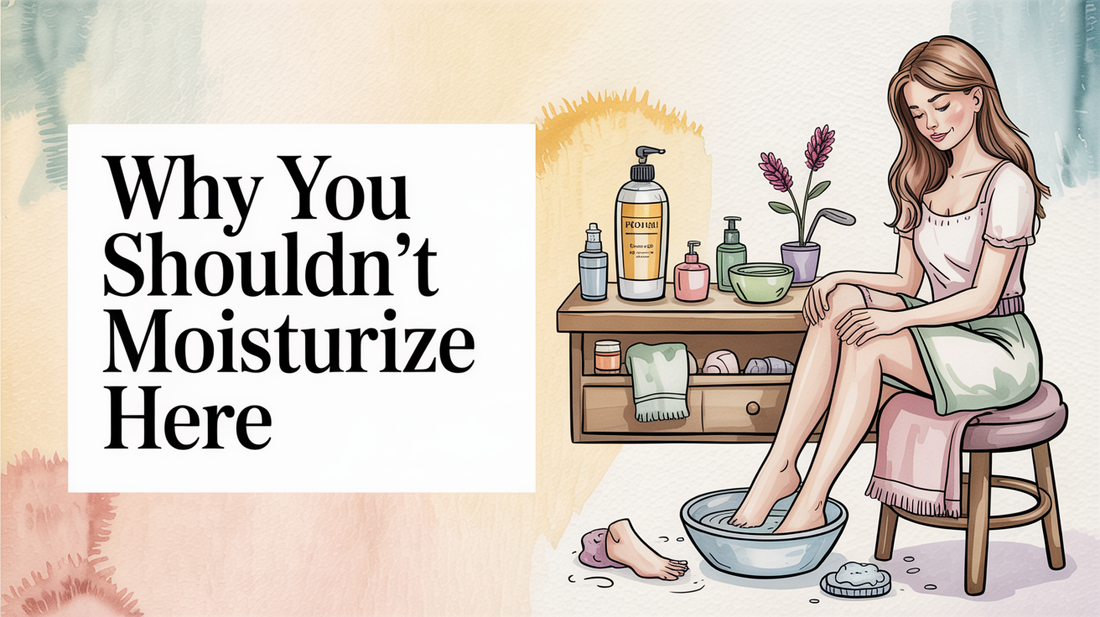Should you moisturize between your toes?
foot moisturizer, maceration risk, athlete’s foot prevention — Keeping your feet healthy is crucial, and knowing how to care for the areas between your toes can make a difference. Moisturizing is essential, but it's important to understand the risks involved, including maceration and the potential for athlete’s foot. In this blog post, we will explore the significance of toe gaps, safe moisturizing practices, and situations where antifungal treatments may be beneficial. Let’s dive in!
Why gaps matter 🧭
The spaces between your toes create unique environments that require special attention in foot care. These narrow gaps can trap moisture, heat, and dead skin cells, setting the stage for potential bacterial and fungal growth. Unlike other areas of the foot, the toe spaces often lack sufficient air circulation and tend to remain damp longer, especially after bathing or sweating. Additionally, the skin in these areas is thinner and more sensitive, making it susceptible to irritation.
- Poor air circulation can lead to prolonged moisture retention.
- Warm, dark environments promote microbial growth.
- Dead skin cells may accumulate more easily in confined spaces.
- Thinner skin is more prone to breakdown and irritation.
- Tight footwear can further compress these areas, worsening conditions.
Try It Tonight: Calm, Fresh Feet ✨
- Wash feet with warm water and a mild cleanser; ensure you dry thoroughly between your toes.
- Apply a small amount of Kissable Feet where needed; gently massage until absorbed.
- Let your skin breathe; consider slipping on breathable socks if desired. Be sure to patch-test first if you’re new to this foot cream.
Safe moisturizing zones ✨
While most areas of the feet benefit from regular moisturizing, knowing where to apply is key to maintaining foot health. The tops of the feet, heels, and sides generally have thicker skin that can safely handle standard moisturizers without increasing the risk of infection. These areas are better ventilated and less prone to maceration. Identifying the safe zones for moisturizing can help you maintain healthy skin while avoiding problematic areas.
- The tops of feet (dorsal surface) are well-ventilated and safe for regular moisturizing.
- Heels and the back of feet have thicker skin that benefits from hydration.
- The sides of feet are generally safe areas with good air exposure.
- The bottom of feet (plantar surface) can handle moisturizer, but avoid applying between toes.
- Around the ankles is a safe zone that often requires moisture due to sock friction.
Why We Recommend a Gentle Helper 🌿
Kissable Feet is designed for quick absorption and a soothing, non-sting feel. This nurse-crafted blend incorporates tea tree, coconut, and calendula, promoting comfort and a clean finish—perfect for adding to your nightly routine.
- Fast-absorbing comfort with a non-greasy finish.
- Gentle sensation ideal for sensitive, overworked feet.
- Clean, bedtime-friendly scent.
Antifungal exceptions 🔍
While general moisturizing between toes is often discouraged, antifungal products may be specifically recommended for treatment or prevention in high-risk individuals. These specialized formulations are crafted to combat fungal growth while providing a moisture barrier. Healthcare providers may suggest antifungal creams or powders for those with diabetes, compromised immune systems, or recurrent infections. The key distinction is that these products actively fight pathogens instead of merely providing moisture.
- Antifungal creams are often prescribed for active infections.
- Preventive antifungal powders are available for high-risk individuals, such as those with diabetes.
- Medicated foot powders can absorb moisture while preventing fungal growth.
- Barrier creams with antifungal properties are beneficial for athletes or those in humid environments.
- Prescription treatments may combine moisture control with active antimicrobial ingredients.

